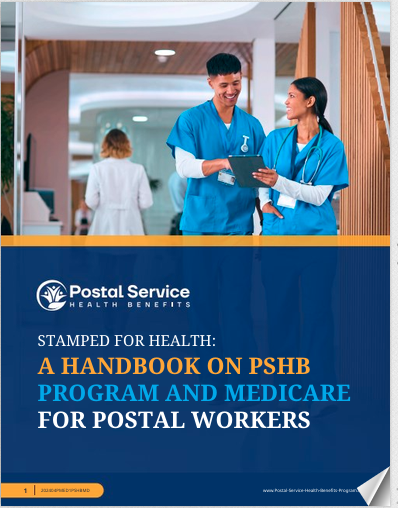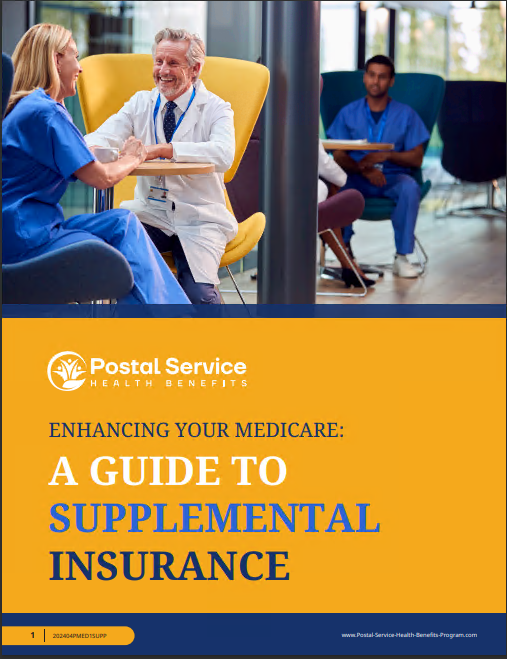Key Takeaways
- The success of the Postal Service Health Benefits (PSHB) program is vital for stabilizing the United States Postal Service (USPS) by addressing its growing healthcare liabilities.
- Effective implementation of PSHB could lead to significant cost savings and improved financial health for USPS, securing its future operations.
Why the Success of PSHB Is Critical to USPS’s Financial Stability
The United States Postal Service (USPS) has been a cornerstone of American communication and commerce for over two centuries. However, in recent years, the USPS has faced severe financial challenges, exacerbated by the growing burden of its employee healthcare obligations. To address these challenges, the Postal Service Health Benefits (PSHB) program was introduced. The success of this program is not only critical to the USPS’s financial stability but also to its ability to continue serving the American public effectively. This article explores why the PSHB is essential to the USPS’s future, highlighting its potential impact on cost reduction, employee benefits, and long-term sustainability.
The USPS’s Financial Struggles: An Overview
The USPS has been operating at a financial deficit for over a decade, with cumulative losses exceeding $90 billion as of 2023. The financial instability stems from several factors, including declining mail volumes, increasing operational costs, and, notably, the hefty burden of pre-funding retiree health benefits. The USPS is required by law to pre-fund retiree health benefits for its employees, a mandate that has created a significant financial strain on the organization.
In 2006, the Postal Accountability and Enhancement Act (PAEA) required the USPS to pre-fund retiree health benefits for 75 years into the future, a requirement that no other federal agency or private company faces. This law has forced the USPS to set aside billions of dollars annually, contributing to its financial woes. As the USPS continues to grapple with these financial challenges, the success of the PSHB program has become increasingly crucial.
What Is the Postal Service Health Benefits (PSHB) Program?
The Postal Service Health Benefits (PSHB) program is a new initiative designed to address the USPS’s healthcare obligations more efficiently. Set to launch in 2025, the PSHB will shift postal employees and retirees from the Federal Employees Health Benefits (FEHB) program into a new, USPS-specific health benefits program. This move is expected to reduce costs for the USPS by leveraging the bargaining power of its large workforce to negotiate more favorable terms with healthcare providers.
The PSHB is also expected to integrate Medicare for eligible retirees, which will further reduce the USPS’s healthcare costs. By requiring future retirees to enroll in Medicare Part B and coordinating benefits between PSHB and Medicare, the USPS can significantly lower its health benefits liabilities. This restructuring is anticipated to save the USPS billions of dollars over the coming decades, providing much-needed relief to its strained finances.
The Role of PSHB in Reducing Healthcare Costs
One of the most significant advantages of the PSHB program is its potential to reduce the USPS’s healthcare costs. Currently, the USPS spends over $5 billion annually on employee and retiree health benefits. This figure is projected to rise as healthcare costs continue to escalate and the USPS workforce ages.
The PSHB program is designed to curb these rising costs by creating a more tailored healthcare plan for postal workers. By negotiating directly with healthcare providers, the USPS can secure better rates and more efficient services, ultimately leading to lower costs. Moreover, the integration with Medicare will shift some of the healthcare expenses from the USPS to the federal government, further alleviating financial pressure on the Postal Service.
Impact on USPS Employees and Retirees
The success of the PSHB program is not only crucial for the USPS’s financial health but also for the well-being of its employees and retirees. For many postal workers, health benefits are a significant part of their overall compensation. The transition to the PSHB program has raised concerns among some employees and retirees about potential changes to their healthcare coverage and costs.
However, the PSHB is designed to maintain or even enhance the quality of healthcare benefits for USPS employees and retirees. By creating a USPS-specific plan, the program can address the unique needs of postal workers, offering more customized and potentially better coverage options. Additionally, by integrating with Medicare, retirees may benefit from more comprehensive coverage at a lower personal cost.
The PSHB program also aims to provide a smoother transition for current and future retirees. For those already retired or close to retirement, the program includes provisions to ensure they are not adversely affected by the shift to the new system. This includes grandfathering clauses and options for those who may prefer to stay on their current plans. Overall, the PSHB is expected to offer a balanced approach that supports both the financial stability of the USPS and the health security of its workforce.
Long-Term Financial Sustainability of USPS
The long-term financial sustainability of the USPS hinges on its ability to control costs while continuing to meet its service obligations. The PSHB program is a critical component of this strategy, offering a pathway to significant cost savings and a more sustainable financial future. By reducing the USPS’s healthcare liabilities, the PSHB program can help the Postal Service focus on its core operations and invest in areas that will enhance its competitiveness and service delivery.
In addition to the cost savings directly associated with the PSHB program, the USPS can benefit from the predictability and stability that the program offers. With a more manageable and predictable healthcare expense structure, the USPS can better plan for the future and allocate resources more effectively. This stability is crucial for an organization that operates in a highly competitive and rapidly changing environment.
Moreover, the success of the PSHB program could serve as a model for other federal agencies and large organizations facing similar challenges with healthcare costs. By demonstrating that a large, unionized workforce can transition to a more efficient and sustainable healthcare system, the USPS could pave the way for broader reforms in federal employee benefits programs.
The Legislative and Regulatory Environment
The success of the PSHB program is also dependent on the legislative and regulatory environment in which it operates. The USPS’s financial challenges are, in part, a result of legislative mandates such as the PAEA, which imposed the pre-funding requirement for retiree health benefits. To ensure the success of the PSHB program, it is essential that Congress and federal regulators provide the necessary support and flexibility.
This includes potential legislative changes to remove or modify the pre-funding requirement, allowing the USPS to allocate more resources to its core operations and the successful implementation of the PSHB program. Additionally, regulators must ensure that the transition to the PSHB program is smooth and that any potential issues are addressed promptly to avoid disruptions to employee and retiree healthcare coverage.
The ongoing collaboration between the USPS, Congress, federal regulators, and postal unions will be crucial to the success of the PSHB program. By working together, these stakeholders can ensure that the program is implemented effectively and that it delivers the intended benefits for both the USPS and its employees.
Challenges and Risks
While the PSHB program holds significant promise for the USPS, it is not without its challenges and risks. One of the primary risks is the potential for implementation delays or complications. The transition to a new healthcare system is a complex process that requires careful planning and execution. Any delays or issues during the rollout could disrupt healthcare coverage for USPS employees and retirees, leading to dissatisfaction and potential financial losses.
Another challenge is ensuring that the PSHB program delivers the expected cost savings. While the program is designed to reduce healthcare costs, there is always the risk that these savings may not materialize as expected. This could be due to various factors, including changes in healthcare costs, unforeseen regulatory challenges, or issues with program administration.
To mitigate these risks, the USPS must take a proactive approach to the implementation and management of the PSHB program. This includes thorough planning, clear communication with employees and retirees, and ongoing monitoring of the program’s performance. By addressing potential challenges early and making necessary adjustments, the USPS can increase the likelihood of the PSHB program’s success.
The Path Forward: Ensuring the Success of PSHB
The success of the PSHB program is critical to the USPS’s financial stability and its ability to continue serving the American public. To ensure that the program achieves its goals, the USPS must focus on several key areas. First, effective communication with employees and retirees is essential to build trust and support for the transition to the new system. The USPS should provide clear and transparent information about the PSHB program, including how it will impact healthcare coverage and costs.
Second, the USPS must work closely with healthcare providers, regulators, and postal unions to negotiate favorable terms and ensure that the PSHB program is implemented smoothly. This collaboration will be crucial in addressing any challenges that arise and ensuring that the program delivers the expected benefits.
Finally, the USPS should continuously monitor the performance of the PSHB program and be prepared to make adjustments as needed. By taking a flexible and adaptive approach, the USPS can ensure that the PSHB program remains effective in the long term and continues to support the financial stability of the organization.
Ensuring Long-Term Financial Health
The future of the United States Postal Service depends heavily on its ability to manage costs and maintain financial stability. The Postal Service Health Benefits program is a vital component of this strategy, offering a path to significant cost savings and a more sustainable future. By effectively implementing the PSHB program, the USPS can secure its financial health, continue to provide essential services to the American public, and maintain its role as a critical part of the nation’s infrastructure.
Contact Information:
Email: [email protected]
Phone: 6865559012







